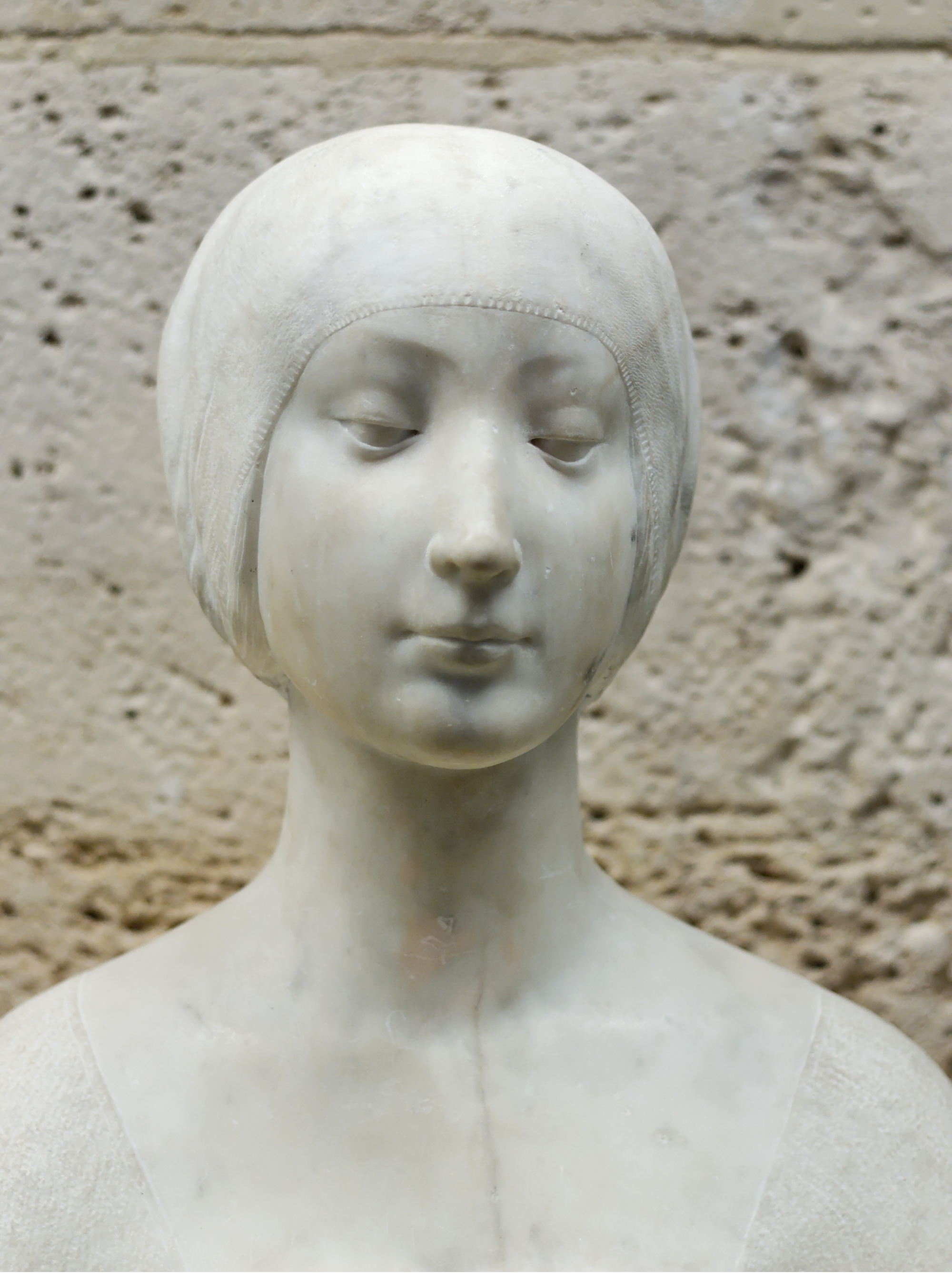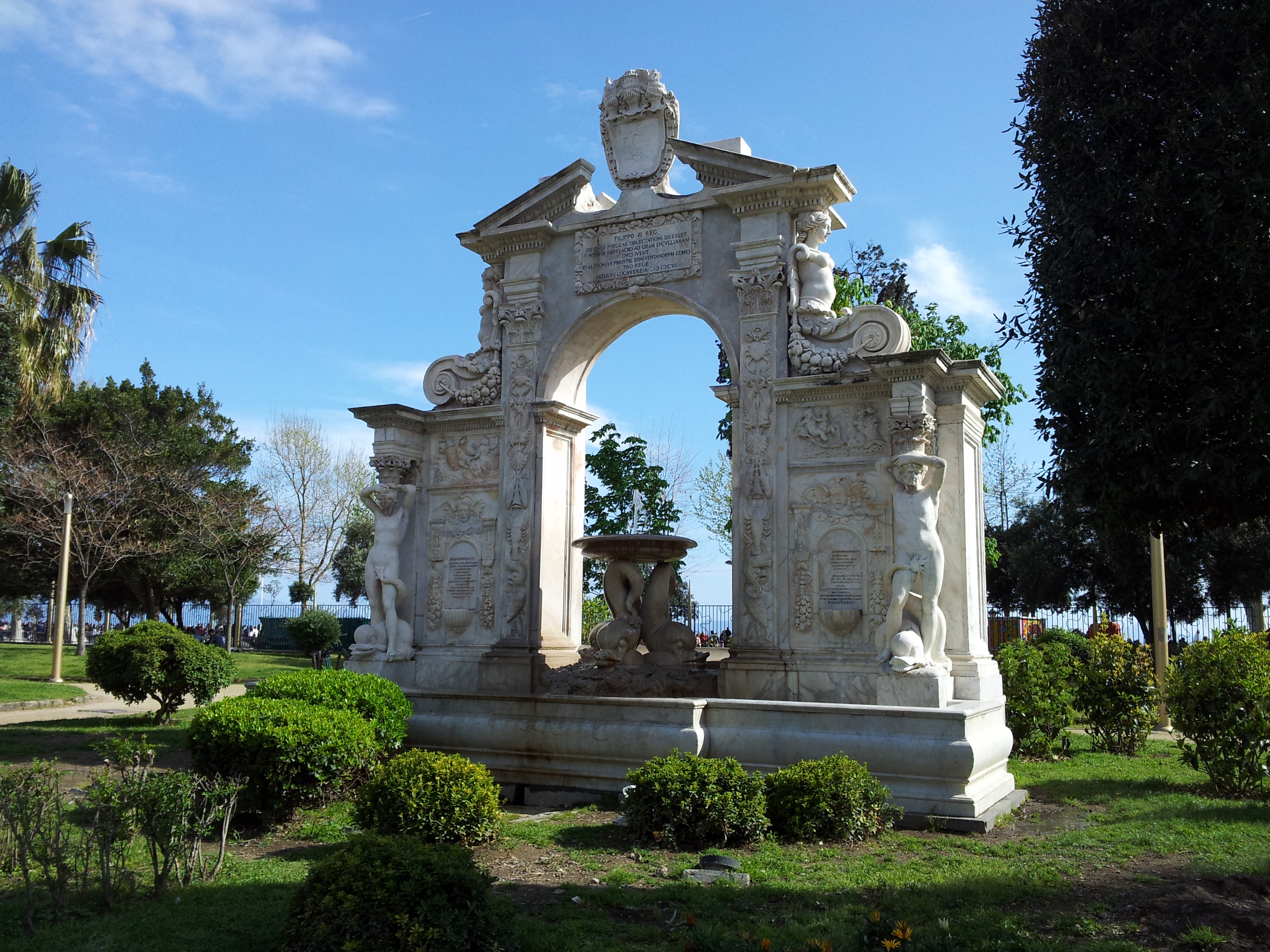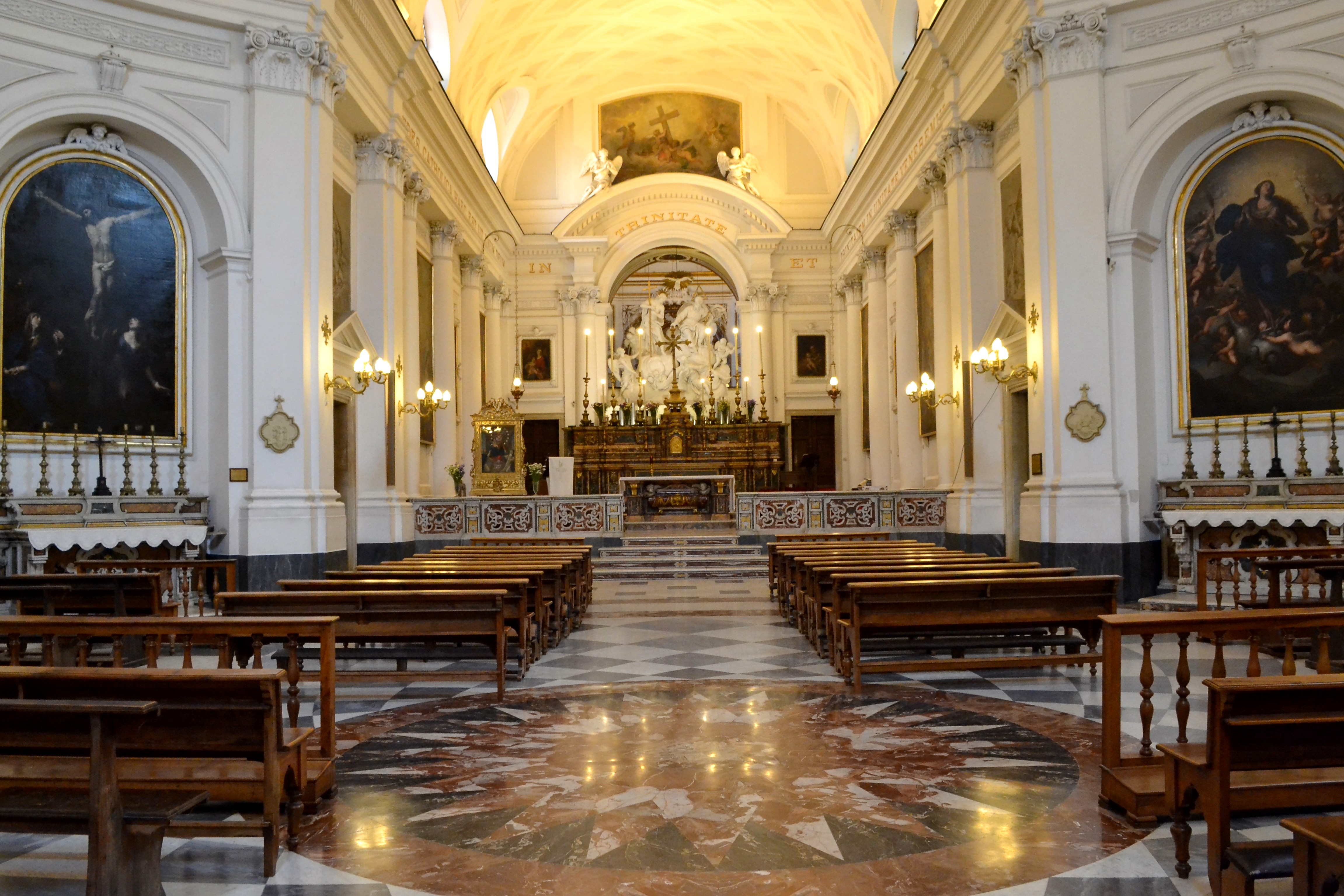|
Santa Maria Materdomini, Naples
Santa Maria Materdomini is a Roman Catholic church located near piazzetta Fabrizio Pignatelli, in Naples, Italy History The church was founded in 1573–75 by the Fabrizio Pignatelli, brother of the second duke of Monteleone, knight of the Priory of Jerusalem (Gerosolimitani or Knights Hospitaller), and former Bailiff of Santa Eufemia in Calabria. As a knight or leader of knights, Pignatelli had fought in the defense of the Siege of Rhodes (1522), Tripoli (1544)(see Siege of Tripoli (1551), and Siege of Malta (1565). The church was constructed adjacent the Hospital of " Santissima Trinità dei Pellegrini". Upon the death of the patron, the church was then ceded to Archiconfraternity which already ran the hospital. The façade was designed by Giovanni Francesco Di Palma. On the entry door was a ''Madonna con Bambino'' by Francesco Laurana (15th century), now found on the main altar. The interior contains the marble and bronze ''Funereal Monument of Fabrizio Pignatelli'', commis ... [...More Info...] [...Related Items...] OR: [Wikipedia] [Google] [Baidu] |
Roman Catholic
The Catholic Church (), also known as the Roman Catholic Church, is the largest Christian church, with 1.27 to 1.41 billion baptized Catholics worldwide as of 2025. It is among the world's oldest and largest international institutions and has played a prominent role in the history and development of Western civilization. O'Collins, p. v (preface). The church consists of 24 ''sui iuris'' (autonomous) churches, including the Latin Church and 23 Eastern Catholic Churches, which comprise almost 3,500 dioceses and eparchies around the world, each overseen by one or more bishops. The pope, who is the bishop of Rome, is the chief pastor of the church. The core beliefs of Catholicism are found in the Nicene Creed. The Catholic Church teaches that it is the one, holy, catholic and apostolic church founded by Jesus Christ in his Great Commission, that its bishops are the successors of Christ's apostles, and that the pope is the successor of Saint Peter, upo ... [...More Info...] [...Related Items...] OR: [Wikipedia] [Google] [Baidu] |
Francesco Laurana
Francesco Laurana, also known as Francesco de la Vrana (; c. 1430 – before 12 March 1502) was a Dalmatian sculptor and medallist. He is considered both a Croatian and an Italian sculptor. Though born in the territory of the Republic of Venice, he spent his mature career at the other end of Italy, moving between Naples and Sicily, and Urbino, and finally in southern France, where he died. He was one of the more significant and complex sculptors of the 15th century – complex because of his activities within varying cultural circles and his exposure to differing influences. His best works evolved in the workshop tradition in collaboration with other artists. His portrait busts reveal a creative individuality that was seen as particularly fascinating in the late 19th century. Though it is impossible to chart his stylistic development, his later work made in France shows some assimilation of northern realism, which is absent from the work executed in Italy. Life and works La ... [...More Info...] [...Related Items...] OR: [Wikipedia] [Google] [Baidu] |
16th-century Roman Catholic Church Buildings In Italy
The 16th century began with the Julian calendar, Julian year 1501 (represented by the Roman numerals MDI) and ended with either the Julian or the Gregorian calendar, Gregorian year 1600 (MDC), depending on the reckoning used (the Gregorian calendar introduced a lapse of 10 days in October 1582). The Renaissance in Italy and Europe saw the emergence of important artists, authors and scientists, and led to the foundation of important subjects which include accounting and political science. Copernicus proposed the Copernican heliocentrism, heliocentric universe, which was met with strong resistance, and Tycho Brahe refuted the theory of celestial spheres through observational measurement of the SN 1572, 1572 appearance of a Milky Way supernova. These events directly challenged the long-held notion of an immutable universe supported by Ptolemy and Aristotle, and led to major revolutions in astronomy and science. Galileo Galilei became a champion of the new sciences, invented the first ... [...More Info...] [...Related Items...] OR: [Wikipedia] [Google] [Baidu] |
Roman Catholic Churches Completed In 1575
Roman or Romans most often refers to: *Rome, the capital city of Italy *Ancient Rome, Roman civilization from 8th century BC to 5th century AD *Roman people, the people of Roman civilization *Epistle to the Romans, shortened to Romans, a letter written by Paul, found in the New Testament of the Christian Bible * Ar-Rum (), the 30th sura of the Quran. Roman or Romans may also refer to: Arts and entertainment Music *Romans (band), a Japanese pop group * ''Roman'' (album), by Sound Horizon, 2006 * ''Roman'' (EP), by Teen Top, 2011 *"Roman (My Dear Boy)", a 2004 single by Morning Musume Film and television *Film Roman, an American animation studio * ''Roman'' (film), a 2006 American suspense-horror film * ''Romans'' (2013 film), an Indian Malayalam comedy film * ''Romans'' (2017 film), a British drama film * ''The Romans'' (''Doctor Who''), a serial in British TV series People *Roman (given name), a given name, including a list of people and fictional characters *Roman (surname), ... [...More Info...] [...Related Items...] OR: [Wikipedia] [Google] [Baidu] |
Francesco Liberti
Francesco, the Italian (and original) version of the personal name "Francis", is one of the most common given name among males in Italy. Notable persons with that name include: People with the given name Francesco * Francesco I (other), several people * Francesco Barbaro (other), several people * Francesco Bernardi (other), several people *Francesco di Giorgio Martini (1439-1501), Italian architect, engineer and painter *Francesco Zurolo (first half of the 15th century–1480), Italian feudal lord, baron and italian leader * Francesco Berni (1497–1536), Italian writer * Francesco Canova da Milano (1497–1543), Italian lutenist and composer * Francesco Primaticcio (1504–1570), Italian painter, architect, and sculptor * Francesco Albani (1578–1660), Italian painter * Francesco Borromini (1599–1667), Swiss sculptor and architect * Francesco Cavalli (1602–1676), Italian composer * Francesco Maria Grimaldi (1618–1663), Italian mathematician and ... [...More Info...] [...Related Items...] OR: [Wikipedia] [Google] [Baidu] |
Nicola Malinconico
Nicola Malinconico (1663–1721) was a Neapolitan painter of the late-Baroque. He is described as a follower of Luca Giordano, and painted mostly religious canvases. He painted the chapel altarpieces for the church of St Michele Arcangelo in Anacapri. He also painted still life paintings recalling work by Pietro Paolo Bonzi and Paolo Porpora and influenced by the Flemish still life painter David de Coninck. Around 1700, he was commissioned by bishop Oronzo Filomarino to decorate the cathedral of Gallipoli in the province of Lecce Lecce (; ) is a city in southern Italy and capital of the province of Lecce. It is on the Salentine Peninsula, at the heel of the Italian Peninsula, and is over two thousand years old. Because of its rich Baroque architecture, Lecce is n .... He completed large canvases of ''Christ clearing the moneylenders from the temple'' in the counter-facade; ''Entry into Jerusalem'', ''Miracle of the lame'', ''Burial of Saint Agatha''. On the ceiling ... [...More Info...] [...Related Items...] OR: [Wikipedia] [Google] [Baidu] |
Francesco Solimena
Francesco Solimena (4 October 1657 – 3 April 1747) was a prolific Italian Baroque painter, one of an established family of painters and draughtsmen. Biography Francesco Solimena was born in Canale di Serino in the province of Avellino. He received early training from his father, Angelo Solimena, with whom he executed a ''Paradise'' for the cathedral of Nocera Inferiore, Nocera (a place where he spent a big part of his life) and a ''Vision of St. Cyril of Alexandria'' for the church of San Domenico at Solofra. He settled in Naples in 1674, where he worked in the studio of Francesco di Maria.Pavone, Mario Alberto (2003, January 1). "Solimena family". Grove Art Online. He was patronized early on, and encouraged to become an artist by Cardinal Vincenzo Orsini (later Pope Benedict XIII). By the 1680s, he had independent fresco commissions, and his active studio came to dominate Neapolitan painting from the 1690s through the first four decades of the 18th century. He modeled h ... [...More Info...] [...Related Items...] OR: [Wikipedia] [Google] [Baidu] |
Leonardo Olivieri
Leonardo or The Leonardo may refer to: Arts and entertainment * '' Leonardo Journal'', an arts journal * ''Leonardo'' (Italian magazine), a philosophy magazine published in Florence, Italy, in 1903–1907 * ''Leonardo'' (journal), published by the MIT Press * Leonardo (''Teenage Mutant Ninja Turtles''), one of the main characters in the ''Teenage Mutant Ninja Turtles'' franchise * Leonardo (TV channel), an Italian television channel * ''Leonardo'' (2011 TV series), a CBBC television series which centers around teenage Leonardo da Vinci played by Jonathan Bailey * ''Leonardo'' (2021 TV series), an Italian-American television series * '' Leonardo the Musical: A Portrait of Love'', a 1993 musical * Leonardo/ISAST, the International Society for the Arts, Sciences and Technology * " The Leonardo", a 1933 short story written in Russian by Vladimir Nabokov * Leonardo, the assistant of inventor Clyde Crashcup People * Leonardo da Vinci (1452–1519), Italian polymath * Leonardo ... [...More Info...] [...Related Items...] OR: [Wikipedia] [Google] [Baidu] |
Michelangelo Naccherino
Michelangelo Naccherino (Florence, March 6, 1550 – Naples, February, 1622) was an Italian sculptor and architect, active mainly in the Kingdom of Naples, Italy. He supposedly was a pupil of Giambologna in Florence, but due to disagreements moved to the Kingdom of Naples in 1573. From 1575-1577, he was active in Palermo, where he worked alongside Camillo Camilliani in the construction of the Fontana Pretoria, a project of Francesco Camilliani. Returning to Naples, he completed a number of Mannerist projects such as the tomb of Alfonso Sanchez (1588–89) in the Basilica of Santissima Annunziata Maggiore and a crucifix (1599) for the church of San Carlo all'Arena. He also completed a ''Madonna della Sanità'' for the church of Santa Maria della Sanità in the zone of Materdei, where he lived. In the early 1600s, he participated in a variety of projects, including the Fontana di Santa Lucia and the Fontana del Gigante (along with Pietro Bernini). In 1607, he su ... [...More Info...] [...Related Items...] OR: [Wikipedia] [Google] [Baidu] |
Giovanni Francesco Di Palma
Giovanni may refer to: * Giovanni (name), an Italian male given name and surname * Giovanni (meteorology), a Web interface for users to analyze NASA's gridded data * ''Don Giovanni'', a 1787 opera by Wolfgang Amadeus Mozart, based on the legend of Don Juan * Giovanni (Pokémon), boss of Team Rocket in the fictional world of Pokémon * Giovanni (World of Darkness), a group of vampires in ''Vampire: The Masquerade/World of Darkness'' roleplay and video game * "Giovanni", a song by Band-Maid from the 2021 album ''Unseen World'' * ''Giovanni's Island'', a 2014 Japanese anime drama film * ''Giovanni's Room'', a 1956 novel by James Baldwin * Via Giovanni, places in Rome See also * * *Geovani *Giovanni Battista *San Giovanni (other) *San Giovanni Battista (other) San Giovanni Battista is the Italian translation of Saint John the Baptist. San Giovanni Battista may also refer to: Churches in Italy * San Giovanni Battista, Highway A11, in Florence * San Giovanni Batti ... [...More Info...] [...Related Items...] OR: [Wikipedia] [Google] [Baidu] |
Naples
Naples ( ; ; ) is the Regions of Italy, regional capital of Campania and the third-largest city of Italy, after Rome and Milan, with a population of 908,082 within the city's administrative limits as of 2025, while its Metropolitan City of Naples, province-level municipality is the third most populous Metropolitan cities of Italy, metropolitan city in Italy with a population of 2,958,410 residents, and the List of urban areas in the European Union, eighth most populous in the European Union. Naples metropolitan area, Its metropolitan area stretches beyond the boundaries of the city wall for approximately . Naples also plays a key role in international diplomacy, since it is home to NATO's Allied Joint Force Command Naples and the Parliamentary Assembly of the Mediterranean. Founded by Greeks in the 1st millennium BC, first millennium BC, Naples is one of the oldest continuously inhabited urban areas in the world. In the eighth century BC, a colony known as Parthenope () was e ... [...More Info...] [...Related Items...] OR: [Wikipedia] [Google] [Baidu] |
Santissima Trinità Dei Pellegrini, Naples
The Santissima Trinità dei Pellegrini (''Most Holy Trinity of Pilgrims'') is a church on via Portamedina in the historic city centre of Naples, Italy. History The church building and the eponymous hospital was founded in the sixteenth century by Fabrizio Pignatelli di Monteleone, a member of the Knight of Jerusalem, and later, the complex, was given to the Brotherhood of the Holy Trinity. The hospital attached therein, the structure was designed by Carlo Vanvitelli, and enlarged along with the church in 1769. The church connects on the right nave with the small church of Santa Maria Materdomini, Naples, Santa Maria Materdomini. Description The facade is characterized by fine stucco statues of Angelo Viva, representing ''San Filippo Neri and San Gennaro''. The architecture of the temple is somewhat unusual; the floor plan is formed by two octagons joined by a rectangle, with the first octagon which assumes the function of the nave and the second serving as oratory, while the ... [...More Info...] [...Related Items...] OR: [Wikipedia] [Google] [Baidu] |





